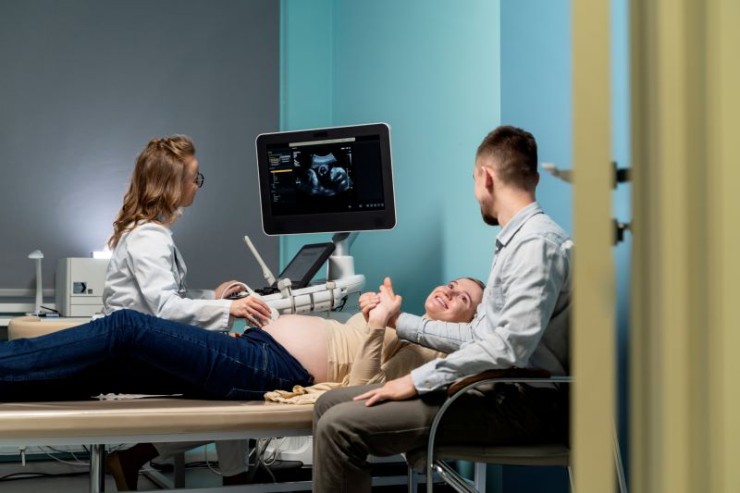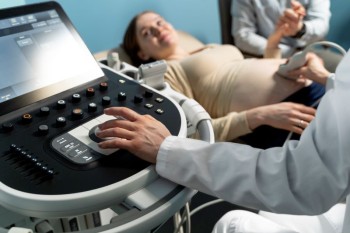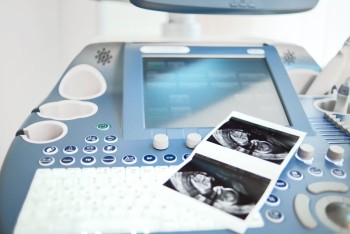
The USG Anomaly Scan, also known as the Mid-Pregnancy Scan, stands as a crucial milestone in prenatal care.
Ultrasound / USG Anomaly Scan in India with Cost
USG Anomaly Scan in
Detail: Unveiling the Intricacies of Fetal Assessment
Entering the realm of prenatal care, the USG (Ultrasonography) Anomaly Scan emerges as a critical diagnostic tool, offering a comprehensive examination of the developing fetus. This guide aims to illuminate the significance, procedure, and insights provided by the USG Anomaly Scan during the course of pregnancy.
Introduction
The USG Anomaly Scan, also known as the Mid-Pregnancy Scan, stands as a crucial milestone in prenatal care. Conducted around 18-20 weeks, this detailed ultrasound examination assesses the fetal anatomy, identifying potential abnormalities and providing invaluable information for both healthcare providers and expectant parents.
Understanding USG Anomaly Scan
The USG Anomaly Scan is a non-invasive imaging procedure that utilizes sound waves to create real-time, detailed images of the developing fetus. It is a pivotal step in monitoring fetal growth and ensuring the overall health of both the unborn child and the expectant mother.
Importance in Prenatal Care
The significance of the USG Anomaly Scan lies in its ability to detect structural abnormalities in the fetus, providing an opportunity for early intervention and comprehensive care planning. It plays a crucial role in ensuring the well-being of both the baby and the expectant parents.
Preparation for the Scan
Preparing for the USG Anomaly Scan typically involves having a full bladder to enhance imaging clarity. Comfortable clothing is advisable, allowing easy access to the abdominal area. While no extensive preparations are needed, the scan offers a significant moment for expectant parents to witness the intricate details of their unborn child.
Procedure: A
Comprehensive Fetal Examination
Gel Application: A clear gel is applied to the abdomen to
facilitate the transmission of sound waves.
Transducer Movements: A transducer, a
handheld device, is gently moved over the abdominal area, emitting sound waves
that bounce back to create detailed images.
Fetal Anatomy Assessment: The scan focuses on examining various aspects of
fetal anatomy, including the head, brain, spine, heart, limbs, and internal organs.
Measurement of Fetal Structures: Precise
measurements are taken to ensure proper growth and development of the fetus.
Detailed Assessment Areas
The Ultrasound Anomaly Scan provides a comprehensive assessment of various fetal structures, including:
Central Nervous System (CNS): Examining the
brain and spinal cord for any anomalies.
Cardiovascular System: Assessing the heart's structure and function.
Skeletal System: Examining the bones for proper
formation.
Abdominal Organs: Ensuring the normal development of organs like
the stomach, kidneys, and bladder.
Facial Features: Assessing facial structures for
symmetry and anomalies.
Benefits of Ultrasound/USG
Anomaly Scan
Early Detection: Identifies potential abnormalities at a stage
where interventions can be more effective.
Comprehensive Assessment: Offers a
detailed examination of various fetal structures, providing a comprehensive
overview.
Informed Decision-Making: Empowers
expectant parents with information to make informed decisions about their
pregnancy.
Risks and Considerations
The USG Anomaly Scan is considered safe, with minimal risks. The benefits of detecting potential issues early in pregnancy often outweigh any potential risks associated with the procedure.
Emotional Aspects
For expectant parents, the USG Anomaly Scan is a profound and emotional experience. It provides a visual connection with the developing fetus and offers reassurance about the overall health and well-being of their unborn child.
Expert Perspectives
Medical professionals emphasize the crucial role of the USG Anomaly Scan in early detection and intervention. Their insights contribute to a comprehensive understanding of fetal health and guide expectant parents through the process.
Technological Advancements
Advancements in ultrasound technology continually enhance the precision and clarity of the USG Anomaly Scan, providing more detailed information and improving diagnostic capabilities.
Patient Experience
The USG Anomaly Scan is generally well-tolerated by expectant parents. While it is a detailed examination, the focus is on ensuring the health and development of the fetus, providing a positive and reassuring experience.
Conclusion
In conclusion, the USG Anomaly Scan stands as a crucial step in prenatal care, offering a detailed and comprehensive examination of the developing fetus. This non-invasive procedure plays a pivotal role in ensuring the health and well-being of both the unborn child and expectant parents.
FAQs: Navigating the Journey of Pregnancy with USG Anomaly Scan
1. How long does the USG Anomaly Scan typically take?
The scan's duration may fluctuate, typically lasting between 30 to 45 minutes. Factors such as the fetal position and cooperation can influence the length of the procedure.
2. Is the USG Anomaly Scan safe for the developing fetus?
Yes, the USG Anomaly Scan is considered safe. It uses sound waves rather than radiation, minimizing any potential risks to the fetus.
3. Can the Anomaly Scan determine the gender of the baby?
While the primary purpose is to assess fetal anatomy, the USG Anomaly Scan can often reveal the baby's gender if the parents choose to know.
4. What happens if abnormalities are detected during the Anomaly Scan?
If abnormalities are identified, further diagnostic tests may be recommended for confirmation. A consultation with a specialist will provide more detailed information and guide subsequent steps.
5. At what stage of pregnancy is the USG Anomaly Scan performed?
The Anomaly Scan is typically conducted around 18-20 weeks of pregnancy, providing a comprehensive view of fetal development during this critical period.
6. Are there any specific preparations or restrictions before the Anomaly Scan?
It is advisable to have a full bladder for the scan, as this aids in obtaining clearer images. There are generally no dietary restrictions, but following any specific instructions from the healthcare provider is crucial.
7. Can both parents be present during the USG Anomaly Scan?
In many cases, healthcare providers welcome both parents to share the experience and witness the detailed examination of the developing fetus.
8. What if the baby is not in an optimal position during the scan?
If the baby's position makes it challenging to obtain certain images, the healthcare provider may recommend additional movements or rescheduling the scan for a later date.
9. Is the USG Anomaly Scan covered by insurance?
In many cases, prenatal ultrasound scans, including the Anomaly Scan, are covered by insurance. However, it is advisable to check with the insurance provider to confirm coverage details.
10. Can the USG Anomaly Scan detect all types of birth defects?
While the Anomaly Scan is comprehensive, it may not detect all types of birth defects. It focuses on structural abnormalities, and certain conditions may require specialized tests for confirmation.
These additional FAQs aim to address common concerns and provide further clarity on the USG Anomaly Scan and its implications during pregnancy. Always consult with healthcare professionals for personalized guidance based on individual circumstances.
(0)
Login to continue



